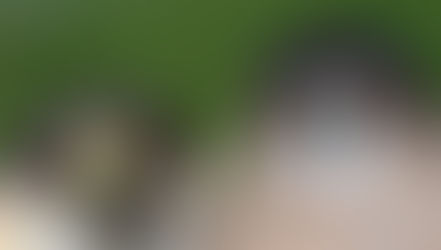How to clean your bird feeders - The best methods for cleaning all bird feeders
- Flocking Around
- Oct 20, 2025
- 6 min read
Birds are coming... they are coming...

Woo hoo! They are coming! While we are all sad to see the seasons change, songbird surges are on the horizon. This means it is time to hang, clean, and/or fill your feeders! It is also time to subscribe to the Flocking Around site! If you always have full feeders, learning to clean your feeders properly is still essential!
If you are like some bird lovers, you put away the good seed, the suet, and the hummingbird feeders after the first week of June. Why? At low elevations (and developed neighborhoods), many people only get House Sparrows and European Starlings during the breeding months in North America. Regardless of whether the birds are our residents or migratory visitors, we want to give them every chance at survival. This is a call to clean all of our bird feeders on a regular schedule. Here are the HOW and the WHY:
As an Amazon Associate, we earn from qualifying purchases. Links may lead to affiliate sites.
Need an easy-to-clean bird feeder?
Grab the Going Green Platform Feeder!
See our full list of recommended bird feeders!
How often should I clean my bird feeders?
Most seed feeders require cleaning a minimum of every 2-3 weeks unless you have seen a sick bird visit your yard. However, cleaning most seed feeders once per week provides the safest haven for birds. Hummingbird feeders must be cleaned every 4-5 days unless temperatures are high. If so, clean hummingbird feeders every 2-3 days.
How to Clean Bird Feeders
Seed feeders are often very simplistic, possibly just a platform or a cylinder with a few seed ports. You should be able to clean these quite easily, with a time to completion for a single feeder being less than 30 minutes. If you have multiple feeders, try cleaning them in waves using a staggered cleaning schedule. Additionally, having two sets of feeders can also provide a more complete way of still offering birdseed while also being able to completely and competently clean your feeders. Most seed feeders require cleaning a minimum of every 2-3 weeks unless you have seen a sick bird visit your yard. Also, make sure to clean away the hulls and poop below your feeder!
To clean your bird feeder:
Take the bird feeder apart (if possible). While leaving it together may make the work go faster, bacteria, viruses, and mold all love the nooks and crannies. If you cannot take it apart, soaking the feeder will likely become necessary.
Clean your prep area. This often-forgotten step can be critical! Many people might clean their feeders in their kitchen. If you do this, make sure to disinfect this area BEFORE cleaning. Why? You have likely had raw meats, including chicken, where you are about to clean your feeder. HOWEVER! It is better to NOT use your kitchen/dishwasher to clean bird feeders. But if you must, disinfect before and after cleaning the feeders.
Clean your bird feeder using a dishwasher on hot, or clean by hand with hot, soapy water. Boiling water is recommended for the hand-cleaning method. If you use your dishwasher, ensure your feeder can be put in the dishwasher before doing so, and DO NOT wash it with your normal dishes. What soap should you use? Dawn dish soap is always a safe bet.
Soak the feeder in a dilute bleach solution. This may not be practical or possible for some, but if you can soak your feeder, YOU SHOULD! Create your dilution with 1 part bleach and 9 parts water. -OR- You can also use a vinegar solution of 1 part vinegar and 3 parts water to soak the feeder. Use plain white vinegar for this solution!
Allow the feeder to dry. Many will forget this step. Wiping it down with a towel can leave more bacteria on the feeder, especially if the towel is not clean. Also, a towel will not get all moisture off the feeder, only allowing for new bacteria to get a foothold. Let the feeder air dry completely. (Do not use a hairdryer, trust me, it will melt your feeder.)
Check your bird food! Forgot this one? Make sure your bag of bird food is mold-free! You just put all that effort into cleaning your feeder, don't contaminate it with cruddy food.
Fill your bird feeder and enjoy the birds!
Need recommendations for a cleaning kit? Check out ours!
What is the ratio of bleach to water for cleaning a bird feeder?
The correct dilution for cleaning your bird feeders is 1 part bleach and 9 parts water. For example, if you are using a 5-gallon bucket to soak bird feeders, you would use 0.5 gallons of bleach with 4.5 gallons of water. This ratio is recommended by research, wildlife agencies, and most bird conservation groups.
What is the ratio of vinegar to water for cleaning a bird feeder?
The correct ratio for using non-industrial cleaning vinegar (using typical household vinegar is best) is a dilution of 1 part vinegar and 3 parts water. For example, if you are soaking bird feeders in a 9L portable washbasin, you would use 2.25L of vinegar and 6L of water. Bleach is the recommended cleaner for feeders, but those with adverse reactions to bleach may consider vinegar as an alternative. Though, vinegar is not as effective at killing some pathogens. We recommend bleach as your main disinfectant.
How to Clean Hummingbird Feeders
Hummingbird feeders can be slightly more difficult to clean. The sticky nature of sugar water increases the amount of effort required. The payoff, though, is remarkable. Those flying gems make all the scrubbing seem less dreary. Replace your hummingbird food every 3-5 days to prevent mold. If you are in a hot climate, you may have to replace it more frequently. If you are tired of wasting hummingbird food, fill only as much as needed. Clean your hummingbird feeder every 7-10 days at a minimum.
To clean your hummingbird feeder:
Clean your prep area.
Take the hummingbird feeder apart.
Clean your hummingbird feeder with hot water and a bottle brush.
DO NOT use soap or other chemicals.
The residue may be detrimental to hummers.
I use a kit with a variety of brushes, like this one.
Soak the feeder in a dilute vinegar solution for 1 hour.
1 part vinegar to 3 parts water
Rinse thoroughly!
Give the feeder several rinses to ensure no solution is left.
Dry the feeder completely.
The bottles can be difficult to dry, but do your best to let them drip/air dry.
Fill your hummingbird feeder with room-temperature food.
Cold hummingbird food may harm hummingbirds.
Enjoy those hummingbirds!
Need a hummingbird feeder recommendation?
Here is ours: Juegoal 12 oz feeder!
Smaller hummingbird feeders are safer, more efficient, and less wasteful. The Juegoal 12 oz hummingbird feeder is our favorite for those flying gems!
Why is Cleaning Bird Feeders Important?

Bird diseases are typically fatal for our avian eye candy. There are a handful of common diseases that kill birds but are completely preventable. A few minutes a week can help a lot of birds.
The most common diseases found at feeder birds are:
Mycoplasmal conjunctivitis (often called House Finch eye disease, though other finches can suffer from it)
Salmonellosis (caused by salmonella bacteria - clean your prep area!)
Aspergillosis (a respiratory disease caused by a fungus/fungi)
Avian pox
While these diseases are all major problems for birds, humans can help prevent the spread of many of these diseases. Cleaning feeders frequently and watching for infected birds are two of the most important steps you can take to minimize the spread of these maladies. If you see a sick bird, quarantine everything it has been in contact with and disinfect all areas. You can also contact a bird rehabilitation center; a list of those for each state can be found here.
Now, go enjoy your feeders! And if you need recommendations on the best feeders, read our post on this topic!
7 Steps to help birds
Want to help birds in other ways? Here are seven simple steps anyone can take at home to help native birds!
These small actions are doable for anyone! They require minimal costs, minimal time, and the smallest levels of effort. Yet, if we love birds, why aren't we all taking them? If you want to visit the Roost (Flocking Around HQ), we guarantee you will see each of these efforts and more! We would not ask you to do something that we are not doing ourselves.
If you enjoy these flocking posts, register for site notifications, like us on Facebook, follow us on Instagram and Twitter, and visit our Amazon Storefront.
















